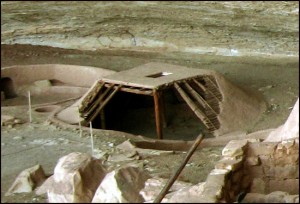Carlo Severi, an Italian anthropologist, has studied the connection between images and social memory. By asking questions such as, how images contribute to a society’s understanding of itself, and where history and tradition intersect, Severi has uncovered incredible findings about the aesthetic world. Perhaps the most important discovery of Severi’s is the necessity of images and how they allow cultures to interpret thoughts and build a common memory. He explains the value of seeing images as more than aesthetic materials; instead they have both historical and theoretical value that connects a society together.
Severi’s study of Mesoamerican and Catholic culture represents the importance of images and social identity. The Spanish conquest of Mexico not only took away political power and basic agency from Native societies; it also replaced their culture with European principles and values. Indigenous religions were systematically destroyed as people were forced to adapt to a foreign culture. Since worldview is fundamental to societies, this destruction of culture caused incredible strife for Native people. As one can imagine, affected societies struggled to hold on to previous traditions in the face of major social change. The common memory of historical Mesoamerican societies used images to hold onto their religion as the Spanish converted the area.
A major theme in indigenous Mesoamerican religion is respect towards death and the dead. However, death is seen as dark and evil in many Anglo-Saxon cultures and adaptations of Christianity. Upon the Spanish attempts to convert societies to Catholicism, a sect of people retained culture via the incorporation of Dona Sebastiana, or the Saint of Death. Paintings, sculptures, and other religious materials were created to depict Dona Sebastiana and death’s triumph over Jesus. Catholics from Europe obviously do not condone such iconography.

By retaining an important figure as they were being converted to a new religion, native Mesoamericans were able to hold on to a piece of their culture. Images created in honor of Dona Sebastiana allowed communities to build a image and interpretation of the Saint of Death and ultimately allowed a common memory and tradition to be created. Besides the significance of Dona Sebastiana in historical religious terms, the icon also represents the inversion of the death of Christ, revealing the triumph of death rather than the opposite, which is traditionally celebrated in Catholicism. Moreover, in social terms, there image of Dona Sebastiana’s arrow piercing Jesus shows the conflict of enemy cultures. All in all, Severi’s presentation illuminated the connection between social changes, images, and common memory.
by Kathryn Marshall



